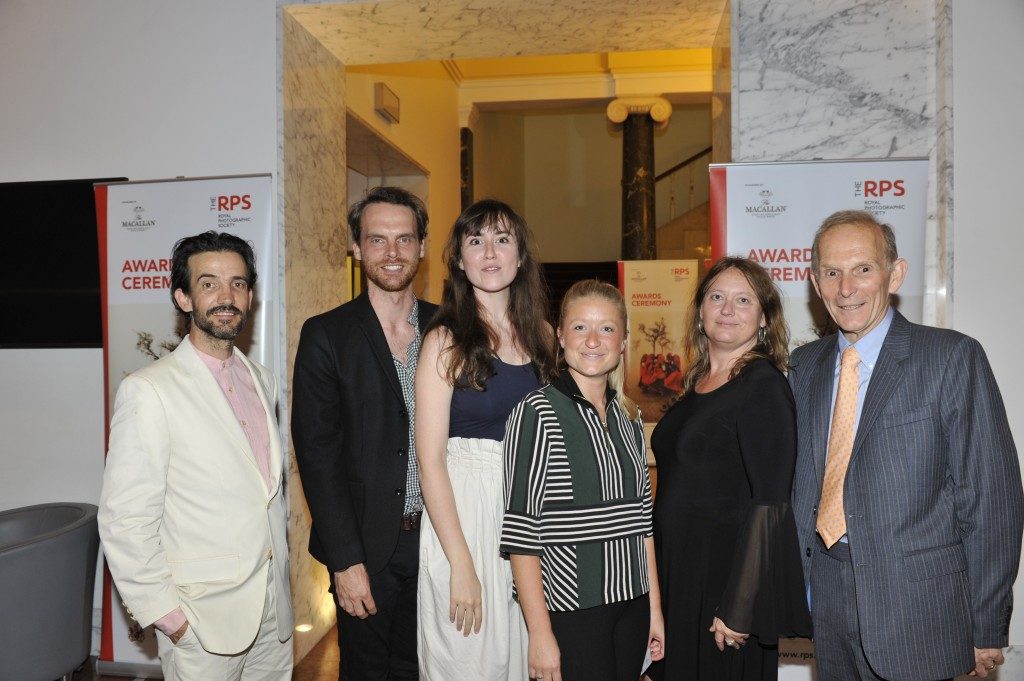2016 Bursary Winners Recognised at Awards Ceremony
19th Sep 2016

Left to right: Alan McFetridge, Carl Bigmore, Hannah-Katrina Jedrosz, Jen Gorman (TPA), Liz Williams (RPS) and Adrian Stone (TPA).
Last week, representatives from The Photographic Angle were present at the annual awards ceremony hosted by The Royal Photographic Society. Our two organisations work together to offer two £3,000 bursaries to support photographic projects that promote environmental awareness. Adrian Stone, our Education Officer, attended the prestigious event along with Jen Gorman, our Exhibitions Manager. They were both able to meet with the 2016 bursary winners and get an insight into how their photographic projects will benefit from the bursaries and what exactly they hope to achieve.
The winner of the 31 years and over category was Alan McFetridge whose project will highlight the environmental impact of the recent forest fires in Fort McMurray, Alberta, Canada. It is very topical, it took place in May and June this year and destroyed vast areas of forest and 2,400 homes. Although a single environmental disaster can’t be attributed to the effect of global warming, the summer temperatures were unusually high and the forest was very dry.
Hannah-Katrina Jedrosz and Carl Bigmore, both freelance documentary and portrait photographers based in London, were the winners of the under 30’s category. Their project involves travelling along the length of the European Green Belt, which traces the boundary of the Iron Curtain from north to south. For nearly five decades, this space was an out-of-bounds no-man’s land dividing east from west. This corridor enabled wildlife to flourish and today, much of the route is connected through national parks and nature reserves. The project aims to explore the human impact on a specific but vast stretch of natural habitats that comprise the European Green Belt.
Commenting on the winning projects Adrian said: ‘The two projects work quite well together. The first is a salutary warning of the impact of global warming and the dire consequences facing our existence. The second is more positive and highlights nature’s capacity to regenerate biodiversity when given the chance.’